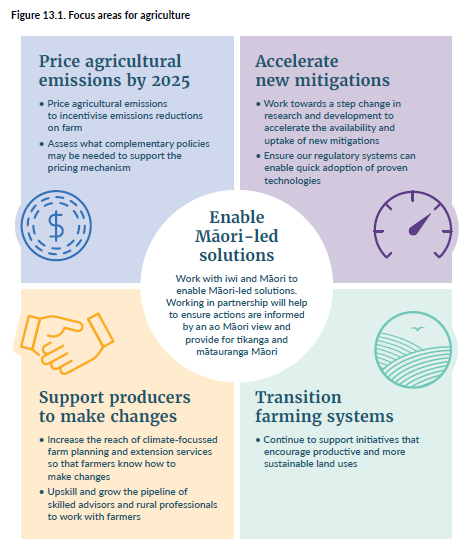Journey to Net-Zero heating up - Part One
Topics covered in this article: RMA & Local Government, Sustainability & Climate Change
Special Counsel
Phone: +64 7 927 0522
Email: rzame@clmlaw.co.nz
Bachelor of Laws, Bachelor of Science, University of Otago
Journey to net-zero heating up – are you keeping on top of climate change developments?
Part One : New Zealand’s first Emissions Reduction Plan and the emissions budgets
Climate Change Minister, James Shaw, has announced New Zealand’s first three emissions budgets. Emissions Budgets (Budgets) outline the total level of NZ’s greenhouse gas emissions (GHG) permitted during a particular period. The first three budgets set out the total annual emissions through to 2035.
Cabinet has now agreed the Budgets are:
- Emissions Budget 1 (2022-2025) - 290 megatonnes of carbon dioxide equivalent GHG (average 72.4 megatonnes (Mt) per year)
- Emissions Budget 2 (2026-2030) – 305 megatonnes of carbon dioxide equivalent GHG (average 61 Mt per year) (in principle)
- Emissions Budget 3 (2031-2035) – 240 megatonnes of carbon dioxide equivalent GHG (average 48 Mt per year) (in principle)
The Budgets represent a multi-year target, rather than setting a target for emissions to reach a certain level in a single year.
The Zero Carbon Act (ZCA) requires that the Budgets are met through domestic action alone. The ZCA enshrines the long-term target of net-zero by 2050, and established a system of five-yearly Budgets which are stepping stones towards the 2050 target. The ZCA requires there to be 3 consecutive Budgets (one current and two prospective) in place at any one time.
Budget 1 is in line with recommendations provided in the Climate Change Commission’s Final Report. Budgets 2 and 3 are stricter than those proposed by the Climate Change Commission. You can read more about the Climate Change Commission’s Report here:
https://www.cooneyleesmorgan.co.nz/Climate_change_policy
The reason for the stricter targets is due to an error that was identified in the forestry projections after the Climate Change Commission Report, and the Budgets have been updated to reflect the impact of afforestation in new forestry projections.
How will the Budgets be achieved? New Zealand’s First Emissions Reduction Plan
The Government’s proposal for achieving the Budgets has been set in NZ’s first Emissions Reduction Plan, released on Monday 16th May. A new Emissions Reduction Plan will be published before the start of each Budget period and will be informed by advice provided by the Climate Change Commission.
The focus of the Emissions Reduction Plan is how the country will reduce emissions in line with the Budgets. However, there are climate impacts which are already ‘locked in’ because of the effect we have already had on the environment. Those effects will primarily be addressed through the National Adaptation Plan. A summary of the draft National Adaptation Plan is provided in Part Two of this Article.
A summary of the Emissions Reduction Plan can be found here:
The Emissions Reduction Plan includes key actions across the following sectors:
- Transport
- Energy & Industry
- Agriculture
- Waste
- Fluorinated Gases
- Forestry
Sector sub-targets[1] have also been set across the above sectors, but are not legislated. The reason stated is that they are intended to check progress, but not lock New Zealand into a single pathway for meeting the emissions budgets.
A summary of the key actions across the sectors is set out below.
Transport
Transport is responsible for around 17% of New Zealand’s gross emissions. The Plan sets four transport targets:
- Reduce total kilometres travelled by the light fleet by 20% by 2035 through improved urban form and providing better travel options, particularly in our largest cities.
- Increase zero-emissions vehicles to 30% of the light fleet by 2035.
- Reduce emissions from freight transport by 35% by 2035.
- Reduce the emissions intensity of transport fuel by 10% by 2035.
Key actions identified include:
-
Reducing reliance on cars and supporting people to walk, cycle and use public transport including:
- Improving the reach, frequency and quality of public transport and making it more affordable for low-income New Zealanders;
- Initiatives to increase the use of e-bikes.
-
Working towards electrification of New Zealand’s vehicle fleet including:
- Continuing to incentivise the uptake of low and zero-emission vehicles through the Clean Vehicle Discount scheme.
- Trialling a scrap-and-replace scheme to increase access to low and zero-emission vehicles for low-income households.
- Improving EV charging infrastructure across NZ
-
Working on decarbonising heavy transport and freight by:
- Providing funding to support the freight sector to purchase zero and low emissions trucks
- Requiring only zero-emissions public transport buses to be purchased by 2025
- Supporting the uptake of low-carbon liquid fuels by implementing a sustainable aviation fuel mandate and a sustainable biofuels obligation.
Energy and Industry
Energy and Industry make up approximately 27% of New Zealand’s gross GHG emissions. Targets have not been set for the energy sector, although the Government intends to set a target of 50% of total final energy consumption from renewable sources by 2035; and Government’s ‘aspirational target’ of 100% renewable electricity by 2030. The target will be reviewed in 2024 before developing the 2nd Emissions Reduction Plan.
Key actions identified include:
- Improving business and consumer energy efficiency through programmes;
- Providing warmer, drier homes for low-income New Zealanders through Warmer Kiwi Homes;
- Ensuring the electricity system is ready to meet future needs including looking at market measures to support the transition to highly renewable systems and investigating storage options for dry years; reducing barriers to developing and efficiently using infrastructure, including transmission and distribution; supporting renewable and affordable energy in communities through the Māori and Public Housing Renewable Energy Fund.
- Reducing reliance of fossil fuels and supporting transition to low-emission fuels including establishing a gas transition plan; and increasing access to low-emission fuels through a hydrogen roadmap;
- Supporting industry to switch from fossil fuels to low-emission alternatives through funds and business programmes; and banning new and medium temperature coal boilers and phasing out existing ones by 2037.
Building and Construction
Building and Construction is responsible for approximately 9.4% of New Zealand’s GHG emissions. Emissions are largely accounted for in the energy and industry, transport and waste sectors.
Key actions include:
- Reducing the embodied carbon of construction materials by supporting innovation and regulating to promote the use of low-emissions building design and materials.
- Accelerating the shift to low-emissions buildings by promoting good examples, providing incentives and supporting the use of low-emissions practices.
- Improving building energy efficiency by amending the Building Code and measuring energy performance to ensure buildings are designed, and retrofitted, to use less energy for heating and cooling.
- Shifting energy use from fossil fuels by developing a gas transition plan and understanding the impacts of transition for households and communities.
- Establishing foundations for future emissions reduction by improving emissions data for buildings and materials, building relationships with Māori, and progressing behaviour change and workforce transition programmes.
Agriculture
Agricultural emissions make up 50% of all New Zealand’s gross emissions; 94% of our nitrous oxide emissions and around 91% of our biogenic methane. It is imperative that these emissions are reduced to meet our climate goals, as well as meeting the targets for reduction of biogenic methane (10% by 2030 relative to 2017 levels; and 24-47% by 2050).
Around ¾ of agricultural emissions are biogenic methane from livestock; followed by nitrous oxide emissions from nitrogen fertiliser use (around 3.9% of agricultural emissions).
However, the Government recognises that the agricultural sector plays a key part in the national ( particularly the Māori) economy, as well as the increasing number and range of changes required across the industry.
Change in this sector is primarily stemming from He Waka Eke Noa – Primary Sector Climate Action Partnership established in 2019.
The five focus areas for agriculture are summarised in the diagram below[2]:
All producers are to have emissions reports by the end of 2022 and a farm plan (GHG emissions mitigation plan) in place by 2025.
Farm Planning Guidance for GHG was developed by He Waka Eke Noa and published in March 2022 and can be found here:
Forestry
Given the role forestry plays in providing long-term carbon sinks, supporting biodiversity, and contributing to an equitable transition, actions are also provided with the Emissions Reduction Plan. In particular, Māori are considered to be well positioned to contribute to and lead developments in forestry, both for exotic and native species. Māori own NZ$4.3 billion of assets in forestry and have ownership of more than 30% of land under plantation forestry and large areas of indigenous forest. Māori customary and freehold land (around 1.4 million ha) makes up approximately 5.7% of all land in Aotearoa.
However, the focus in the Plan includes:
- Ensuring the right mix, level and location of afforestation is supported
- Encouraging native forests as long term carbon sinks
- Maintenance of existing forests
- Growing the forestry and wood processing industry to deliver more value from low-carbon products. This includes investing in expanding the supply of woody biomass to fuel the bioeconomy.
Waste
Although waste contributes a small % of total emissions, approximately 94% of waste emissions (in 2019) were biogenic methane, largely generated by decomposition of organic waste (e.g. food, garden, wood and paper waste). Biogenic methane has a warming effect 28 times greater than carbon dioxide.
Key actions include:
- Enabling households and businesses to reduce organic waste, including by improving household kerbside collections of food scraps and garden waste; and investing in organic waste processing and resource recovery infrastructure. It also includes investigating banning organic waste from landfill by 2030.
- Reducing and diverting construction and demolition waste to beneficial uses.
- Introducing regulations to require landfill gas capture at municipal (Class 1) landfills and feasibility studies to determine the need for additional landfill gas capture requirements.
- Improving waste data and prioritising a national waste licensing scheme.
- A new Waste Strategy is to be published in 2022 to ensure waste minimisation and recovery of organic and inorganic materials. In addition, the Government is updating both the Waste Minimisation Act 2008 and Litter Act 1979, with new legislation (and additional regulatory tools) likely to be enacted in 2024 to support delivery of the Waste Strategy and the Emissions Reduction Plan.
Fluorinated Gases
F-gases are mainly used as refrigerants in heating and cooling appliances and made up 2% of New Zealand’s total gross GHG emissions (in 2019). Hydrofluorocarbons (HFCs) ( a subset of F-gases) are believed to contribute significantly to global warming despite being emitted in relatively low quantities.
Actions include:
1. Building capability to shift to alternative low-emissions refrigerants.
2. Prohibiting the import of pre-charged equipment, and investigating prohibiting F-gases with high global warming potential; and
3. Introducing a mandatory product stewardship scheme for refrigerants.
Commentary
The changes proposed are wide ranging, extensive and touch almost every industry across New Zealand. The principles underpinning the strategy include empowering Māori, providing for an equitable transition (including to ensure that low-income households are not disproportionately affected) and working with nature. The Plan includes multiple references to the importance of Māori and the use of mātauranga Māori in the transition to low-emission, climate resistant economy.
There is also significant reference to funding and financial incentives, which are intended to accelerate the transition, including the Government’s announcement of the $4.5 billion Climate Emergency Response Fund, issuing of Sovereign Green Bonds from late 2022 onwards, and a new Crown Responsible Investment Framework for Crown Financial Institutions (including the NZ Super Fund, ACC, the Government Superannuation Fund and the National Provident Fund) to transition their portfolios and commit to net-zero emissions by 2050. It also includes implementation of the Carbon Neutral Government Programme to lead by example.
The Plan is clear about the role required by local government in the transition, given its role in providing local infrastructure and public services, such as roading, transport, 3 Waters, kerbside collections and waste management, building consenting and compliance, and flood and coastal hazard management. In addition, councils have planning and decision-making powers relating to land use and urban form which will involve engagement with communities to achieve the significant behavioural shifts required. The Plan recognises that while some councils have already developed emission reduction plans, many will need central government support and guidance to build capacity and capability, understand their roles and responsibilities for emissions reduction and ensure they have the tools and resources needed for change.
Overall the Emissions Reductions Plan largely draws on recommendations from the Climate Change Commission’s Report, although the controversial suggestion of banning natural gas heating systems in houses by 2025 has not been included. The Plan was accompanied by the announcement of $2.9 billion in funding from the Climate Emergency Respond Fund, which will be drawn from Government revenues from auctions in the Emissions Trading Scheme.
The Ministry for the Environment (MfE) has also released New Zealand’s first national adaptation plan. It sits alongside the Emissions Reduction Plan and together they are intended to lay out New Zealand’s overall response to climate change and enable a transition to a low-emissions, climate-resilient future. If you would like to find out more about National Adaptation Plan, please see Part Two of this Article.
If you would like further information on any of the issues raised in this article and how it might affect your business, or if you would like to make a submission on the draft National Adaptation Plan or Managed Retreat documents, contact our resource management team
Part Two covers the draft National Adaptation Plan and Managed Retreat
Updated: 19 May 2022
[1] Refer Table 1.2 on p33 of the Emissions Reduction Plan.
[2] Refer Figure 13.1, p253 of Emissions Reduction Plan.






